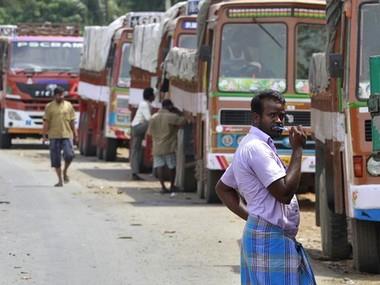News
GST: E-way bills are good but to turn it a success government needs to make it simpler to comply [ Burden on transporter ] by First Post..
The e-way bill system was supposed to roll out from 1 February mandatorily for inter state movement of goods. The states were given the option to roll out the system for all intra state movements up to 1 June 2018. However, due to system constraints, the e-way bill portal could not be operationalised on 1 February.
While the national rollout has been deferred, states are now coming out with state-specific requirement of generation of e-way bills. Bihar and Telangana reverted to their own e-way bill systems on their state portals. It is challenging for suppliers as well as for transporters to keep track on daily basis and to generate e-way bill complying with provisions of respective states.
Before the system is once again mandated nationally there are various issues which are yet to be addressed from technicality/procedural points of view:
*Although various modes for generation of e-way bill are proposed, such as SMS, Android App, API and Web-based, the trial run is still not available for SMS, Android and API.
*It has been mentioned that a dealer who is unregistered for GST purposes can enroll for e-way bill generation. However, the window for enrolment for unregistered persons on the trial run is not yet operationalised on common portal, to try and err.
*The portal is designed such that one e-way bill is linked to one invoice. This is contrary to the requirement where consignment in one invoice is to be transported in multiple conveyances, separate e-way bill is required.
*In case of ‘Bill to Ship to’ transactions, a transporter is required to carry two invoices and two e-way bills for movement of goods. For the said movement, ‘bill to’ buyer is required to raise invoice and e-way bill on immediate basis on ‘ship to’ buyer and to provide all the documents to transporter appointed for movement, which seems practically challenging.
*There are also some concerns in the portal like HSN mismatch between GSTN list of valid HSNs vis-a-vis NIC portal excel utility; and non-acceptance of '0' value in case of free samples that need to be addressed.
*In case of multi-model movement of consignment, each transporter causing further movement is required to update the details in Part B of the e-way bill.
*Transporter is required to move the consignment within validity period/time as defined based on distance, in order to have smooth transportation and to avoid the generation of a new e-way bill.
*Person who causes movement is liable to generate the e-way bill. However, in case of his failure, the ultimate responsibility then falls on transporter to generate the same which causes additional burden for every transporter.
*Where multiple consignments are intended to be moved under single conveyance, the transporter is required to generate additional consolidated e-way bill.
Addressing the above issues would make the e-way bill introduction seamless and acceptable to all stakeholders. It would also be ideal if the date of introduction of e-way bill through common portal is the same countrywide, to enable businesses to be ready with common processes, software and accounting.
